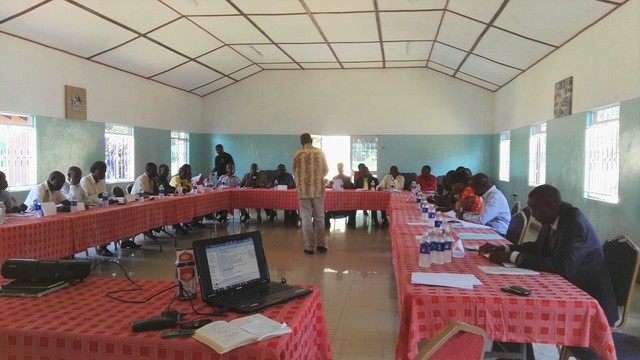Fall army worm maize attack: a case for diversity from farm to fork
As the Zambian government scales up efforts to control an army worm outbreak that is damaging maize crops across the country, William Chilufya wonders if the infestation will encourage a policy shift away from mono-cropping maize.


The fall army worm, a breed of earthworm currently devastating Maize crops in southern Africa (Photo: Wesley Wakunuma)
Maize – Zambia's primary staple crop – is under attack from fall army worms. The fall army worm is a migratory pest that rapidly moves through fields eating young plant stems at lightning speed, leaving devastation in their wake. It is estimated that 10 per cent of Zambian farms in six provinces have already been affected.
Maize dominates agricultural production in Zambia and neighbouring countries, in spite of its limited nutritional value. Other staple crops, such as millet, are far more nutritious, drought tolerant and less susceptible to pest outbreaks. Yet more than 90 per cent of smallholders rely on maize for income and food calories.
The current pest invasion could cause farmers in affected areas to lose 30 to 40 per cent of their crops. According to media reports, the army worm – which is native to the Americas – will continue to wipe out tens of thousands of acres of maize fields unless its progress is controlled.
Catastrophic impact
According to the United Nations Food and Agriculture Organization (FAO), the effects of the army worm invasion could be catastrophic for Zambia.
The government has declared the outbreak a national disaster and disbursed over US$3 million for pest control. Military planes have sprayed affected areas in an attempt halt the infestation. However, experts worry that the army worm's capacity to burrow into the centre of maize plants will make it difficult to control the outbreak using pesticides.
Pest invasions come from a combination of ecological and climatic factors, such as weather patterns, mono cropping, the introduction of new species, or pest migration routes. Because the army worm jumps across borders, it is already being reported in neighbouring countries such as Burundi, Malawi and Zimbabwe, increasing the challenge of controlling the infestation.
Interestingly, other crops such as cassava, millet and sorghum have been less affected. While the loss of maize crops to this infestation must be addressed, it is important to consider whether the country's reliance on maize has contributed to the pest attack.
Maize is referred to as a 'politicised crop' in Zambia because of government interventions to support it. Zambia's government has promoted maize more than other crops such as cassava, millet and sorghum, a fact that could make reflection challenging.
Since 2007, the Zambian government has spent an average of 80 per cent of its agricultural budget supporting the production of maize. The latest attack on the maize crop by army worms therefore highlights the need for Zambia to diversify its crop production.
Greater diversity of foods on the farm and on the plate is something that is also urgently needed to combat hunger and malnutrition nationally.
Moreover, much of the maize grown in Zambia is rain fed, making it vulnerable to climatic shocks such as drought. Within the last 20 years, prolonged dry spells and shorter rainfall seasons have reduced maize yields to only 40 per cent of the long-term average, a consideration that also makes the case for diversification.
Dietary decisions
Though Zambia has recently been receiving good rainfall, the gains are likely to be jeopardised by the pest attack. Climatic shifts, the inadequate production of alternative staple crops and poverty are contributing to widespread food insecurity in Zambia.
Maize mono cropping is diminishing the variety of foods in the fields and in people's diets. Zambia has one of the highest levels of stunting in Africa, with one of the causes diets that are heavily reliant on maize.
If there is a role that crop diversification can play in halting the advance of future army worm attacks, it is worthy of national debate. Despite being a much loved crop in Zambia and neighbouring countries, it is high time to ask whether maize is proving too costly at a production and dietary level.
William Chilufya (wchilufya@hivos.org) is the Southern Africa manager of the Sustainable Diets for All project run by Hivos and IIED.




